 The promise of diesel engines in light aircraft has been around for some time. Engines that burn Jet A are generally more efficient than similarly sized gas engines, plus there are no worries about fuel grades. Jet A is available worldwide, while high-octane avgas isn’t. This is the story of how a Van’s RV-9A was fitted with a diesel.
The promise of diesel engines in light aircraft has been around for some time. Engines that burn Jet A are generally more efficient than similarly sized gas engines, plus there are no worries about fuel grades. Jet A is available worldwide, while high-octane avgas isn’t. This is the story of how a Van’s RV-9A was fitted with a diesel.
Where It Began
ZU-IXF, our RV-9A with the Continental CD-155, took to the skies in Cape Town in January 2023. Gordon Blamire, my business partner, has extensive experience flying the Continental diesel with flight school Piper PA-28s and we’ve both flown Lycoming RV-7 and RV-9 variants. It was Gordon’s idea back in 2017 to pair the Continental engine with the RV-9.
Throughout the process we’ve looked to the experts. We studied the work Glasair Aviation did to install the CD-135 diesel in the Sportsman and Kurt Goodfellow helped us with initial considerations for the engine mount. We consulted with Ken Krueger (ex-Van’s) on design viability. Robin Coss Aviation in Cape Town did the RV build and engine installation work. They have built more RVs than anyone in the world and produce RV aircraft of stunning quality. We hired aeronautical engineering services to conduct structural analysis and coupled that analysis with real load and stress testing on the engine mount. Most importantly, we worked with Continental in Germany to provide oversight, design and quality checking. We wanted to ensure the engine installation met their high installation standards from the outset.
What’s the Downside?
In one word, weight. The diesel is 85 pounds heavier than the Lycoming O-320. The engine position on the firewall means that CG remains well within limits. The cowl is similar to a Lycoming cowl, so we are using a modified RV-14 cowl. The battery and some avionics were moved from the firewall or panel to behind the aft bulkhead. As a result, no additional weight has been introduced—we are only dealing with the increased engine weight.
As a base comparison, a standard RV-9A holds 36 gallons of fuel weighing 228 pounds. To offset the 85 pounds gained with the engine, we either need to load less fuel or find weight savings. Our target is to keep the useful load the same and get the same or better range as a standard RV-9A. We achieve this with the combination of increased diesel efficiency (approximately 40%) and being as efficient as possible with weight. We expect to get close to that goal. Our RV-9A has great avionics and in hindsight we should have gone for a more efficient spec! We have dual G3X, two radios, G5 standby, autopilot and IFR/VNAV capabilities. It makes it a real pleasure to fly, but we pay for it in weight.
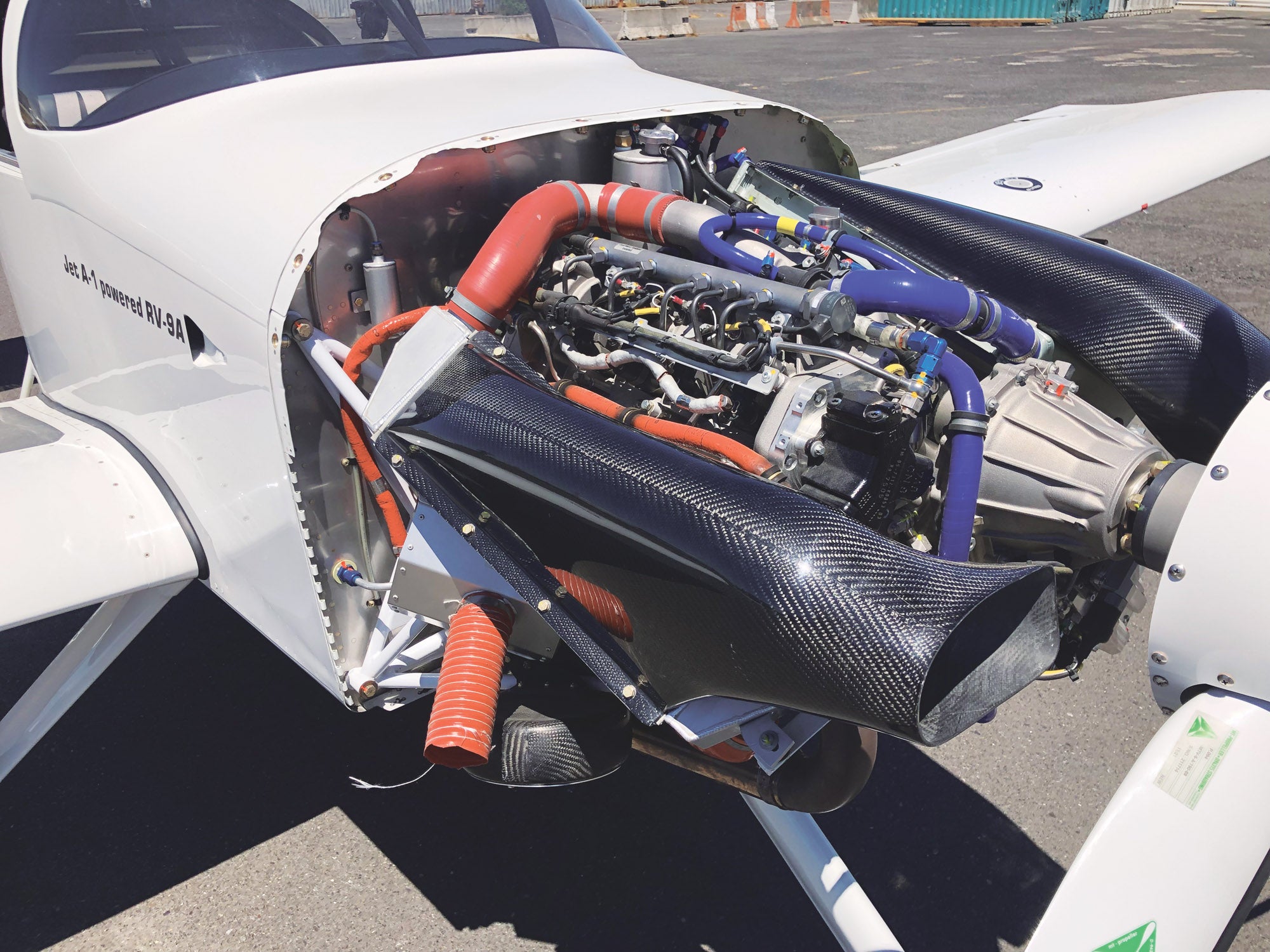
Why the RV-9A?
However you look at it, the airplane we call an RV-9D has been well worth the wait. Ease of operation, smoothness, Van’s RV efficiency and performance. We climb at 1400 fpm and true out at 163 knots at 10,000 feet using 7.8 gallons per hour. Pull the engine back to 75% power and we are seeing 154 knots at 6 gph.
Functionally, it’s a win. Hot starts are a nonissue as is power management. A FADEC-managed single-lever power system makes this a breeze. Efficiency comes in part from the fuel injection, which has five to six injections per cylinder stroke. (Yes, you read that correctly.) The benefits of maximizing atomization are significant. Plus, being turbocharged, the CD-155 maintains full power to 10,000 feet.
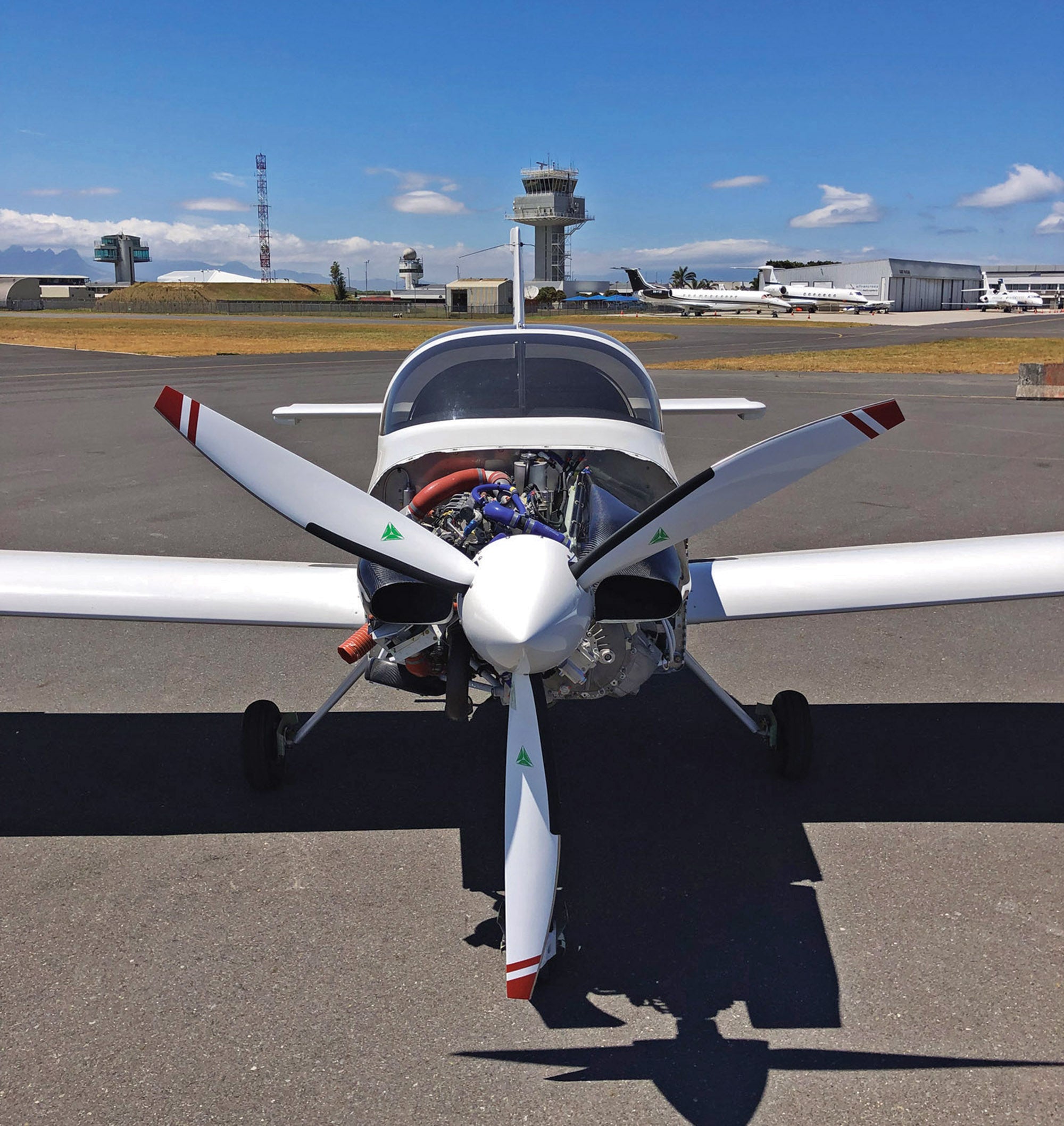
Fuel and Maintenance Cost Comparison
While the Continental diesel used to be expensive compared to the Lycoming, the new acquisition price gap is narrowing. In places where there’s a greater price differential between avgas and Jet A, it is starting to look very attractive. In the U.K., for example, running the diesel is around four times cheaper when you combine efficiency and fuel cost. Engine run-up is also “pushbutton” simple. The engine runs through the full set of checks, including failing and running through the FADEC backup systems. Simply press and hold the FADEC test button, wait for the test cycle to finish and check the annunciators on the G3X. That’s it. Nothing more to check. The engine is “automation ready” too. Power to the fuel control unit is electronic and therefore ready for advanced facilities such as autoland and autopilot throttle control.
There are advantages with maintenance too. Every engine event is stored in the memory and available for download, making identifying and troubleshooting any problems easier. There is a single 100-hour maintenance event and every component required for the 100-hour check is provided. The Continental terminology for overhaul is TBR (time between replacement) versus TBO (time between overhaul). The exchange event is similar to an overhaul in cost and occurs at 2100 hours.
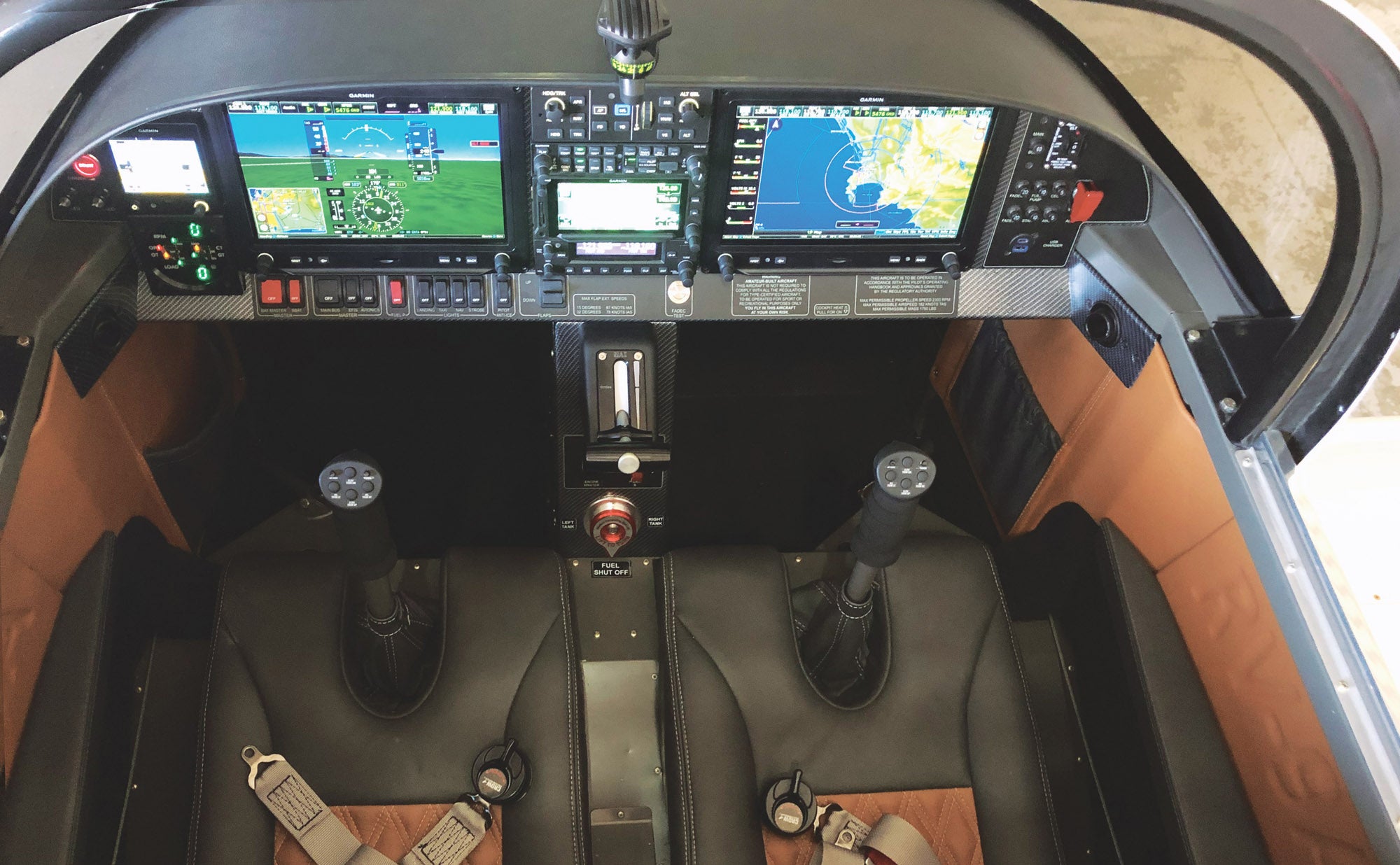
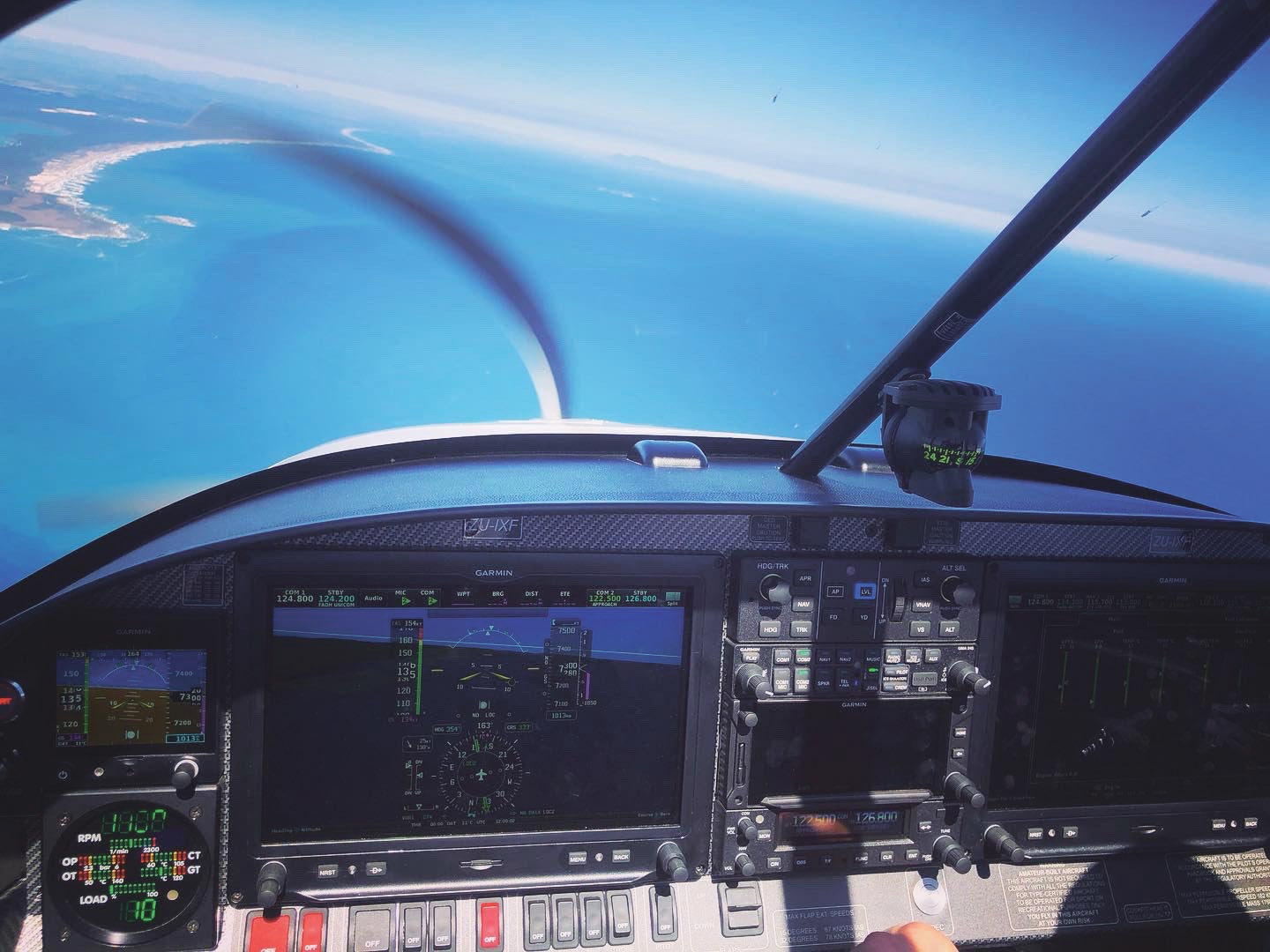
Flying the RV-9D
It starts with normal preflight checks. Specific attention to gearbox oil level is an additional external check that will need to be done. Inside the aircraft, the checklist runs through coolant level and self-test checks for the FADEC. Then you turn on the battery master, battery backup and engine master. Wait briefly for the glow-plug light to extinguish and then press the start button.
The engine starts almost immediately. The diesel runs smoothly and quietly. It’s important to check that the FADEC and its backup systems are all running correctly. This involves switching off the alternator and battery master and ensuring the engine continues to run normally. We pay specific attention to temperatures and are looking for oil temperature and coolant temperatures to be in the green before increasing engine revs. Power checks are completed automatically using the FADEC test button, which cycles through the engine parameters and prop feathering and tests each FADEC to ensure backup systems are all working.
Lined up and ready to go, you can simply advance the power level to the stop and let the FADEC do the work. Acceleration is quick and the aircraft is off the ground in around 300 feet. Comfortable climb is 95 knots with a climb rate of 1200–1400 fpm. Engine cooling in the RV cowl is working out well. It is comparable to, if not better than, the certified C-172 and PA-28 installations.
Next Steps
The Continental CD-155 engine has run without issue from hour zero. We have now flown 60 hours and we have used those hours to learn what we need for a final “production” version of a firewall-forward kit for the RVs. We have spent considerable time on the cowl but have more work to do to meet our target of 170 knots at 10,000 feet. We need to lose drag and make sure our engine’s fuel-delivery map is optimized for the RV. We are looking for weight savings everywhere and ensuring that every change is fully documented and preserved. Battery weight, avionics, carbon fiber and brakes are all on the diet list for the RV-9 to ensure we save as much weight as possible.
Our goal is to ensure we have an engine kit that is installable on many RV models. We anticipate installation will be possible in the RV-7A, RV-8A, RV-9A and both versions of the RV-14. While we are not quite ready to start talking about availability, we expect to have something ready to order in 2025. Remember, installation of the Continental engines will require an approved installer.
We have an RV-14 on order to use with the Continental CD-170. The weight of the CD-170 firewall forward is almost the same as the Lycoming IO-390. While there is a difference in takeoff power, the Continental diesel will overtake the Lycoming at around 8000 feet and be very close in power until you get below 4000 feet.
Based on what we have learned from the RV-9D project it feels like the RV-14/CD-170 will be the “no compromise” combination and should prove to be very popular. In the meantime, we are loving every minute we spend in our RV-9D.

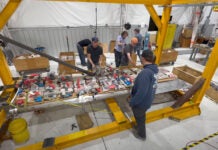












How about a Deltahawk?
Similar or lighter weight; more power.
There is a lot to like about the Delathawk. Pure engineering design, lighter and the promise of more power. Similarly, the Rotax with mogas will produce similar power, and there is the promise of more power to come from Rotax. We spent around 4 years on this project, during which we learned much about theory. We researched all these options in some depth. Our conclusions led us to the Continental once we understood the complex reality of millions of flight hours with an MTBF that is similar to and hopefully better than Lycosaurus. The Continental Diesel is the only engine in class today that ticks this box. Bottom line, users will have more superb choices in the years to come, including, at some point, electric. For now, if you want a modern JETA1 single-button start, certified FADEC engine that is a joy to fly, we love the Continental Diesel.
As an RV-14A builder contemplating engine options, including DeltaHawk, it’s great to see the Continental diesel being developed for the RV series. Any ballpark idea of what the firewall forward package will cost? Are you using an electric MT prop or does the CD-155 installation support a governor and hydraulically actuated prop?
I’m a bit surprised (disappointed) at the performance numbers however. You stated that the diesel engine is 40% more efficient, but 163 knots at 10,000 feet using 7.8 gallons per hour doesn’t sound anywhere near 40% better than a Lycoming O-320. Friend of mine with a 9A and O-320 reports 161 KTAS at 9 gph at best power mixture in the 8-10k’ altitude range, and this aligns with Van’s published performance numbers for the 9A with O-320 at 75% power at 8000′. The diesel engine itself might have a BSFC that is 40% better than the O-320, but that is being offset by higher drag (both parasite for cooling and induced drag due to additional weight), so your real world mpg looks to be only about 10-15% better. Also worth noting that Van’s and several individuals have done comparative performance testing between MT, Hartzell, and Whirlwind props. The MT props were consistently 5-6 knots slower, so you are likely losing some performance there compared to a 9A with O-320 and Hartzell/WW/Sensenich props. But if you need an electric CS prop, MT is the only option unfortunately.